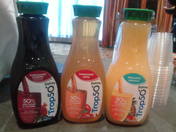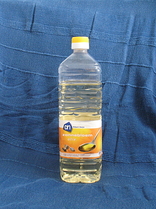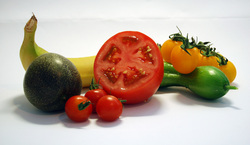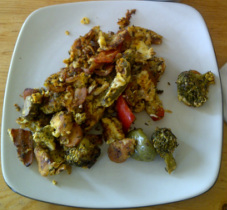
Food allergies or more accurately, food sensitivities are known as Type 3, IgG or delayed reactions. This refers to the specific antibody that the immune system sends out to create the reactions that we feel as symptoms. It is thought that the immune system incorrectly flags the food as an invader. The interesting feature of IgG reactions is that they can occur anywhere between a few minutes to several days after the food or allergen has been introduced to the body. Also, there are a variety of symptoms that may occur depending on the individual including, but not limited, to abdominal pain or bloating, fatigue or fogginess, joint pain, skin rash or irritations or mucous formation in the nose or throat.
There are many options when testing for food sensitivities, but we believe that the most accurate and easiest way to test is through the blood. Other tests include electro-dermal testing through the skin (VEGA) and elimination (hypoallergenic) diet testing. The blood test is the only one that directly measures the amount of IgG antibody that your body produces against approximately 100 different food sources. This provides an objective measure in order to remove the offending foods from the diet and requires only a few drops of blood via finger prick. Electrical impulse testing relies on the experience and expertise of the practitioner, VEGA machine and energy testing. The elimination diet on the other hand, requires a conscious effort to keep many foods out of the diet for one month and systematically introducing each food one at a time. While this can be a great indication of the culprits, it requires more time and effort to provide only a subjective answer. We believe that a combination of blood testing and a modified elimination diet after the results are obtained is the best way to identify and remove symptoms caused by food allergens.
Food Sensitivity Test Options
1. IgG Blood Test
Pros
- objective results
- no commitment to diet required while waiting for results
- easy to obtain results
Cons
- higher cost
2. Elimination Diet
Pros
- less cost
- may feel better immediately on diet
- can detoxify your liver at the same time
Cons
- time consuming
- subjective results
- requires commitment to a temporary lifestyle change
3. Electro-dermal Testing
Pros
- easy to obtain results
Cons
- subjective results as could vary between practitioners and machine
- higher cost
The identification and elimination of your food sensitivities is very important as keeping these foods in the diet can cause unwanted symptoms and inflammation in the body. The good news is that once you know what your food sensitivity is, avoidance is easy. The even better news is that once the food is identified and eliminated for a period of time typically the immune system readjusts and you may be able to enjoy this food again! As all testing comes with pros and cons we suggest using whatever method suits you the best in order to eliminate your food sensitivities as soon as possible.

















 RSS Feed
RSS Feed